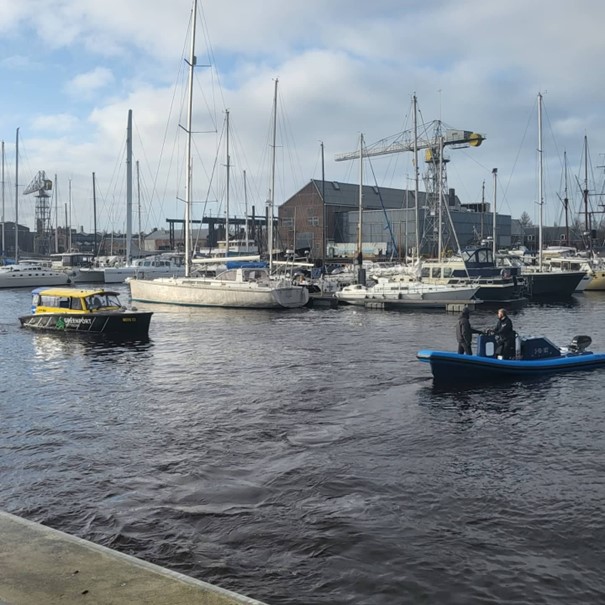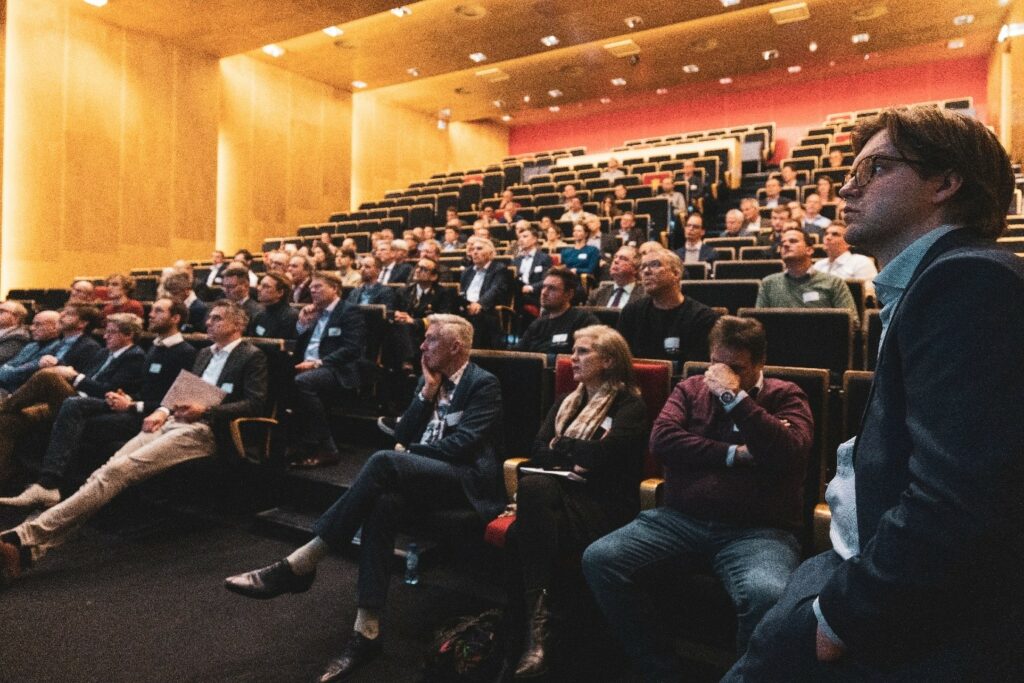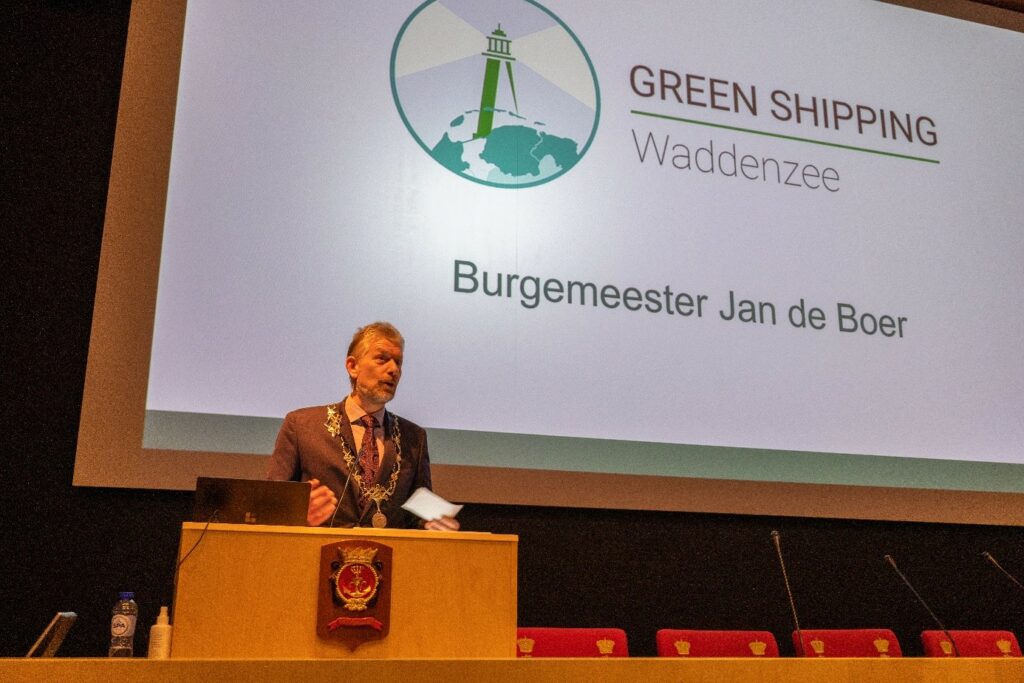Port of Den Helder sees hydrogen as the way to make shipping more sustainable and is investing heavily in the development of a hydrogen tank ecosystem. As part of the Hydrogen Pilot Project, interested parties from the worlds of business and politics were recently able to experience for themselves what sailing on hydrogen means in practice.
The MSTX 22 leaves quietly for a short crossing to the Royal Netherlands Institute for the Navy in Den Helder. The destination is the naval terrain where a meeting is taking place today (Thursday 26 January) on the use of hydrogen in the maritime sector. The day is organized in the context of Hydrogen Testing Ground Den Helder – one of the projects in the Green Shipping Waddenzee program, which was created with the support of, among others, the Waddenfonds, the province of Noord-Holland and the Regio Deal Maritiem Cluster Kop van Noord-Holland. Various regional governments and entrepreneurs work together in Green Shipping Waddenzee to accelerate the transition to sustainable sailing on the Waddenzee.

The crossing to the naval site continues smoothly. The development of the hydrogen water taxi took more than three years, according to the builders/developers on board. Although the boat is chock full of technology, you don't notice it as a passenger. All technical components are conveniently concealed under seats and in the bottom of the vessel.
Since August last year, the unique boat has been in use at Watertaxi Rotterdam. And they are very satisfied so far. Despite the intensive use, the reliability is above expectations. With full tanks, the unique water taxi can sail all day at cruising speed (16 km/h). At top speed, the boat reaches 25 km/h, but for a shorter time. The developers (maritime innovator Flying Fish and fuel cell manufacturer Zepp-solution) are already working on the next step: designing and building a hydrogen boat equipped with a 150 kW fuel cell and storage of more than 500 kg of hydrogen.
Sailing on hydrogen is not a pipe dream. It is already possible. However, in order for a hydrogen economy to flourish, it is necessary to close all links in the chain. This means that not only must there be an infrastructure for the distribution and delivery of hydrogen, but also sufficient demand in the form of consumption by hydrogen vessels.
This exact problem, also known as the chicken-and-egg problem, was central during the meeting on Thursday 26 January. As long as there is no infrastructure available, large shipping companies will hesitate to invest in the purchase of hydrogen ships. While on the other hand, it is difficult for suppliers of hydrogen to make large investments in production and/or distribution as long as there are still few ships sailing.


The willingness to invest in the development of a hydrogen ecosystem is abundantly present in Port of Den Helder. A good example is Zephyros, a project in the port of Den Helder that closes the entire chain. In this project, sustainably generated electricity (with solar energy) is converted into hydrogen and delivered to the Kooijhaven via pipelines and tube trailers. The intention is of course that the hydrogen finds buyers and dThere is still a major challenge ahead, as was evident from the story of Finco Fuel and Total Energies – two parties involved in the project.
To achieve the climate goals, speed is of the essence. In the short term, many more ships will have to sail on hydrogen. What does not help here, however, is that ships have a long economic lifespan. Future Proof Shipping (FPS) wants to accelerate the transition by focusing on retrofit: dOut with the old diesel engine, in with a hydrogen-electric drive. The company has an ambitious conversion program that is now really starting to gain momentum. The first converted inland vessel, the FPS MAAS, will be put into service in April. The diesel was replaced by three fuel cells of 300 KW and the tank holds 500 kg of hydrogen. Due to the high pressure, the hydrogen is stored in steel cylinders, which are then lifted on board in a container. The entire package weighs no less than 32 tons.
The conversion costs and higher price of hydrogen mean that it is currently not feasible from a purely economic perspective. However, FPS is counting on there being enough customers who are willing to pay 'a little' more for sustainable transport. Consumers want the certainty of an emission-free produced and transported product. In addition, the additional price per piece is surprisingly low. For example, FPS MAAS will transport sports shoes from Rotterdam to Belgium. Converted per pair, this would amount to 2 cents extra for the consumer.
During this event, the conversation did not stop there. Kees Turnhout, director of the Port of Den Helder, stated in his closing speech that concrete steps have been taken towards a green hydrogen infrastructure in the Wadden Sea ports: “All parties are focused on making this a reality. Today I saw that we all agreed that sailing on hydrogen is really going to happen.”